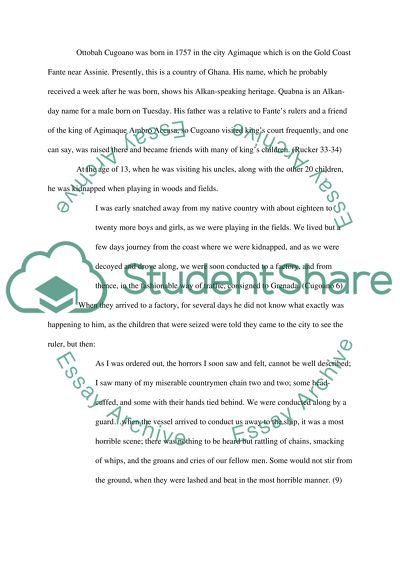Cite this document
(“Autobiography: Quobna Ottobah Cugoano - Trans Atlantic/Anti-Slavery Research Paper”, n.d.)
Retrieved from https://studentshare.org/family-consumer-science/1415424-autobiography-quobna-ottobah-cugoano-trans
Retrieved from https://studentshare.org/family-consumer-science/1415424-autobiography-quobna-ottobah-cugoano-trans
(Autobiography: Quobna Ottobah Cugoano - Trans Atlantic/Anti-Slavery Research Paper)
https://studentshare.org/family-consumer-science/1415424-autobiography-quobna-ottobah-cugoano-trans.
https://studentshare.org/family-consumer-science/1415424-autobiography-quobna-ottobah-cugoano-trans.
“Autobiography: Quobna Ottobah Cugoano - Trans Atlantic/Anti-Slavery Research Paper”, n.d. https://studentshare.org/family-consumer-science/1415424-autobiography-quobna-ottobah-cugoano-trans.


